-
100 results in Exploration of Neuroprotective TherapySort byMost Downloaded
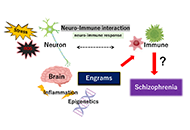 Gut microbiota could modulate the effects of neuro-immune responses and memory traces via the gut-brain-immune axis in schizophreniaOpen AccessPerspectiveAltered immunity may have destructive consequences for the integrated central nervous system. This immune response often affects progressive neurodegenerative diseases such as Parkinson’s disease and/or psychiatric disorders suc [...] Read more.Haruka Sawamura ... Satoru MatsudaPublished: April 24, 2022 Explor Neuroprot Ther. 2022;2:74–86
Gut microbiota could modulate the effects of neuro-immune responses and memory traces via the gut-brain-immune axis in schizophreniaOpen AccessPerspectiveAltered immunity may have destructive consequences for the integrated central nervous system. This immune response often affects progressive neurodegenerative diseases such as Parkinson’s disease and/or psychiatric disorders suc [...] Read more.Haruka Sawamura ... Satoru MatsudaPublished: April 24, 2022 Explor Neuroprot Ther. 2022;2:74–86
DOI: https://doi.org/10.37349/ent.2022.00019
This article belongs to the special issue Intervention of Neuroimmune Responses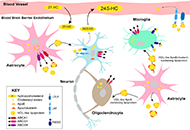 Balancing cholesterol in the brain: from synthesis to disposalOpen AccessReviewThe cholesterol is a vital component of cell membranes and myelin sheaths, and a precursor for essential molecules such as steroid hormones. In humans, cholesterol is partially obtained through the [...] Read more.Lydia Qian ... Andrew J. BrownPublished: January 05, 2022 Explor Neuroprot Ther. 2022;2:1–27
Balancing cholesterol in the brain: from synthesis to disposalOpen AccessReviewThe cholesterol is a vital component of cell membranes and myelin sheaths, and a precursor for essential molecules such as steroid hormones. In humans, cholesterol is partially obtained through the [...] Read more.Lydia Qian ... Andrew J. BrownPublished: January 05, 2022 Explor Neuroprot Ther. 2022;2:1–27
DOI: https://doi.org/10.37349/ent.2022.00015
This article belongs to the special issue Cholesterol Dyshomeostasis in Neurological Diseases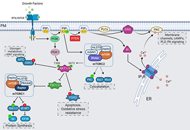 Striking a balance: PIP2 and PIP3 signaling in neuronal health and diseaseOpen AccessReviewPhosphoinositides are membrane phospholipids involved in a variety of cellular processes like growth, development, metabolism, and transport. This review focuses on the maintenance of cellular homeo [...] Read more.Kamran Tariq, Bryan W. LuikartPublished: October 29, 2021 Explor Neuroprot Ther. 2021;1:86–110
Striking a balance: PIP2 and PIP3 signaling in neuronal health and diseaseOpen AccessReviewPhosphoinositides are membrane phospholipids involved in a variety of cellular processes like growth, development, metabolism, and transport. This review focuses on the maintenance of cellular homeo [...] Read more.Kamran Tariq, Bryan W. LuikartPublished: October 29, 2021 Explor Neuroprot Ther. 2021;1:86–110
DOI: https://doi.org/10.37349/ent.2021.00008
This article belongs to the special issue Cholesterol Dyshomeostasis in Neurological Diseases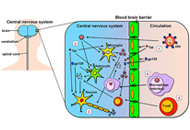 Neurological complications during HIV infectionOpen AccessReviewEarly in the course of infection, human immunodeficiency virus (HIV) is able to enter the central nervous system where it stablishes a permanent reservoir. Current antiretroviral therapies do not ef [...] Read more.Jose M. Martinez-NavioPublished: August 05, 2021 Explor Neuroprot Ther. 2021;1:19–32
Neurological complications during HIV infectionOpen AccessReviewEarly in the course of infection, human immunodeficiency virus (HIV) is able to enter the central nervous system where it stablishes a permanent reservoir. Current antiretroviral therapies do not ef [...] Read more.Jose M. Martinez-NavioPublished: August 05, 2021 Explor Neuroprot Ther. 2021;1:19–32
DOI: https://doi.org/10.37349/ent.2021.00004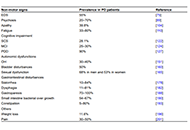 Pathophysiology of non-motor signs in Parkinson’s disease: some recent updating with brief presentationOpen AccessReviewParkinson’s disease (PD) is a progressive neurodegenerative disorder affecting 1% of the population above sixty years. It is caused by an interaction between genetic and envi [...] Read more.Khaled Radad ... Wolf-Dieter RauschPublished: February 27, 2023 Explor Neuroprot Ther. 2023;3:24–46
Pathophysiology of non-motor signs in Parkinson’s disease: some recent updating with brief presentationOpen AccessReviewParkinson’s disease (PD) is a progressive neurodegenerative disorder affecting 1% of the population above sixty years. It is caused by an interaction between genetic and envi [...] Read more.Khaled Radad ... Wolf-Dieter RauschPublished: February 27, 2023 Explor Neuroprot Ther. 2023;3:24–46
DOI: https://doi.org/10.37349/ent.2023.00036
This article belongs to the special issue Parkinsons Disease: Principal Targets and Interventional Mechanisms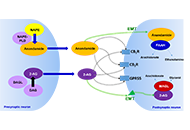 Therapeutic potential of the cannabinoid receptor 2 in neuropsychiatryOpen AccessReviewSince the identification and cloning of the cannabinoid receptor 2 (CB2R), several studies focused on the characterization of its physiological and pathological role. Initially, CB2R was considered [...] Read more.María S. García-Gutiérrez ... Jorge ManzanaresPublished: August 05, 2021 Explor Neuroprot Ther. 2021;1:55–71
Therapeutic potential of the cannabinoid receptor 2 in neuropsychiatryOpen AccessReviewSince the identification and cloning of the cannabinoid receptor 2 (CB2R), several studies focused on the characterization of its physiological and pathological role. Initially, CB2R was considered [...] Read more.María S. García-Gutiérrez ... Jorge ManzanaresPublished: August 05, 2021 Explor Neuroprot Ther. 2021;1:55–71
DOI: https://doi.org/10.37349/ent.2021.00006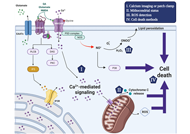 Various facets of excitotoxicityOpen AccessSystematic ReviewAim: Excitotoxicity results from unusually increased activation of excitatory amino acid receptors leading to neuronal death. Since glutamate is the main excitatory neurotransmitter in the centra [...] Read more.Talita Glaser ... Henning UlrichPublished: February 23, 2022 Explor Neuroprot Ther. 2022;2:36–64
Various facets of excitotoxicityOpen AccessSystematic ReviewAim: Excitotoxicity results from unusually increased activation of excitatory amino acid receptors leading to neuronal death. Since glutamate is the main excitatory neurotransmitter in the centra [...] Read more.Talita Glaser ... Henning UlrichPublished: February 23, 2022 Explor Neuroprot Ther. 2022;2:36–64
DOI: https://doi.org/10.37349/ent.2022.00017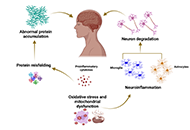 Biomarkers in neurodegenerative diseases: a broad overviewOpen AccessReviewDegeneration and dysfunction of neurons in the brain are hallmarks of neurodegenerative diseases. Over the past decades, significant efforts have been devoted to the development and validation of bi [...] Read more.Sathish Selvam, Velpandi AyyavooPublished: April 16, 2024 Explor Neuroprot Ther. 2024;4:119–147
Biomarkers in neurodegenerative diseases: a broad overviewOpen AccessReviewDegeneration and dysfunction of neurons in the brain are hallmarks of neurodegenerative diseases. Over the past decades, significant efforts have been devoted to the development and validation of bi [...] Read more.Sathish Selvam, Velpandi AyyavooPublished: April 16, 2024 Explor Neuroprot Ther. 2024;4:119–147
DOI: https://doi.org/10.37349/ent.2024.00075
This article belongs to the special issue The Future of Biomarkers in CNS Diseases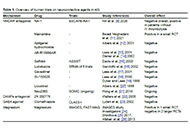 Neuroprotective agents in acute ischemic strokeOpen AccessReviewAcute ischemic stroke (AIS) is the leading cause of disability and one of the top causes of mortality worldwide. The current standard of care is reperfusion therapy including intravenous thrombolysi [...] Read more.Grace YY Chia ... Benjamin YQ TanPublished: February 28, 2023 Explor Neuroprot Ther. 2023;3:47–70
Neuroprotective agents in acute ischemic strokeOpen AccessReviewAcute ischemic stroke (AIS) is the leading cause of disability and one of the top causes of mortality worldwide. The current standard of care is reperfusion therapy including intravenous thrombolysi [...] Read more.Grace YY Chia ... Benjamin YQ TanPublished: February 28, 2023 Explor Neuroprot Ther. 2023;3:47–70
DOI: https://doi.org/10.37349/ent.2023.00037
This article belongs to the special issue The Future of Biomarkers in CNS Diseases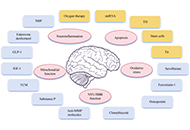 Advances in neuroprotective therapy for acute ischemic strokeOpen AccessReviewAcute ischemic stroke (AIS) is the leading cause of disability worldwide, and recanalization therapy is primary in the hyperacute phase of AIS. However, reperfusion injury and hemorrhagic transforma [...] Read more.Yang Yang ... Yi LiPublished: February 27, 2024 Explor Neuroprot Ther. 2024;4:55–71
Advances in neuroprotective therapy for acute ischemic strokeOpen AccessReviewAcute ischemic stroke (AIS) is the leading cause of disability worldwide, and recanalization therapy is primary in the hyperacute phase of AIS. However, reperfusion injury and hemorrhagic transforma [...] Read more.Yang Yang ... Yi LiPublished: February 27, 2024 Explor Neuroprot Ther. 2024;4:55–71
DOI: https://doi.org/10.37349/ent.2024.00070
This article belongs to the special issue Therapeutic Targets for Neuroprotection in Ischemic Stroke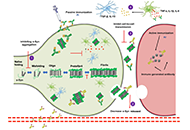 Targeting α-synuclein aggregation with immunotherapy: a promising therapeutic approach for Parkinson’s diseaseOpen AccessReviewParkinson’s disease (PD) is a prevalent neurodegenerative disease (NDD) affecting millions of individuals. The pathogenesis of PD centers around α-synuclein (α-Syn), a pivotal protein whose aggr [...] Read more.Gabriela Henriquez, Mahesh NarayanPublished: August 25, 2023 Explor Neuroprot Ther. 2023;3:207–234
Targeting α-synuclein aggregation with immunotherapy: a promising therapeutic approach for Parkinson’s diseaseOpen AccessReviewParkinson’s disease (PD) is a prevalent neurodegenerative disease (NDD) affecting millions of individuals. The pathogenesis of PD centers around α-synuclein (α-Syn), a pivotal protein whose aggr [...] Read more.Gabriela Henriquez, Mahesh NarayanPublished: August 25, 2023 Explor Neuroprot Ther. 2023;3:207–234
DOI: https://doi.org/10.37349/ent.2023.00048
This article belongs to the special issue Parkinsons Disease: Principal Targets and Interventional Mechanisms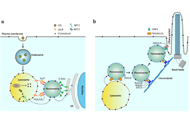 Peroxisomes in intracellular cholesterol transport: from basic physiology to brain pathologyOpen AccessReviewPeroxisomes are actively involved in the metabolism of various lipids including fatty acids, ether phospholipids, bile acids as well as the processing of reactive oxygen and nitrogen species. Recent [...] Read more.Jian Xiao ... Jie LuoPublished: December 30, 2021 Explor Neuroprot Ther. 2021;1:127–145
Peroxisomes in intracellular cholesterol transport: from basic physiology to brain pathologyOpen AccessReviewPeroxisomes are actively involved in the metabolism of various lipids including fatty acids, ether phospholipids, bile acids as well as the processing of reactive oxygen and nitrogen species. Recent [...] Read more.Jian Xiao ... Jie LuoPublished: December 30, 2021 Explor Neuroprot Ther. 2021;1:127–145
DOI: https://doi.org/10.37349/ent.2021.00011
This article belongs to the special issue Cholesterol Dyshomeostasis in Neurological Diseases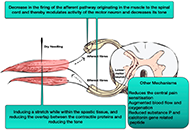 Dry needling in strokeOpen AccessReviewStroke causes acute neurological deficit which is an important cause of morbidity and mortality. Neurorehabilitation is an important dimension in the management of post-stroke deficits. Spasticity, [...] Read more.Nirmal Surya, Guhan RamamurthyPublished: February 17, 2022 Explor Neuroprot Ther. 2022;2:28–35
Dry needling in strokeOpen AccessReviewStroke causes acute neurological deficit which is an important cause of morbidity and mortality. Neurorehabilitation is an important dimension in the management of post-stroke deficits. Spasticity, [...] Read more.Nirmal Surya, Guhan RamamurthyPublished: February 17, 2022 Explor Neuroprot Ther. 2022;2:28–35
DOI: https://doi.org/10.37349/ent.2022.00016
This article belongs to the special issue Dry Needling for Neurological Disorders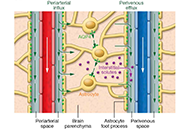 Can meditation-based approaches improve the cleansing power of the glymphatic system?Open AccessPerspectiveThe glymphatic system, first described in 2012, is a brain-wide perivascular network that plays an important role in promoting interstitial metabolic waste removal from the brain. Glymphatic pathway [...] Read more.Peter Wostyn, Piet GoddaerPublished: June 20, 2022 Explor Neuroprot Ther. 2022;2:110–117
Can meditation-based approaches improve the cleansing power of the glymphatic system?Open AccessPerspectiveThe glymphatic system, first described in 2012, is a brain-wide perivascular network that plays an important role in promoting interstitial metabolic waste removal from the brain. Glymphatic pathway [...] Read more.Peter Wostyn, Piet GoddaerPublished: June 20, 2022 Explor Neuroprot Ther. 2022;2:110–117
DOI: https://doi.org/10.37349/ent.2022.00022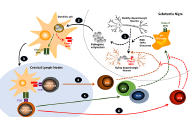 T-cell based immunotherapies for Parkinson’s diseaseOpen AccessReviewCurrent evidence indicates that neurodegeneration of dopaminergic neurons of the substantia nigra associated to Parkinson's disease is a consequence of a neuroinflammatory process in whic [...] Read more.Rodrigo PachecoPublished: October 29, 2021 Explor Neuroprot Ther. 2021;1:72–85
T-cell based immunotherapies for Parkinson’s diseaseOpen AccessReviewCurrent evidence indicates that neurodegeneration of dopaminergic neurons of the substantia nigra associated to Parkinson's disease is a consequence of a neuroinflammatory process in whic [...] Read more.Rodrigo PachecoPublished: October 29, 2021 Explor Neuroprot Ther. 2021;1:72–85
DOI: https://doi.org/10.37349/ent.2021.00007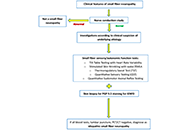 Biomarkers in small fiber neuropathyOpen AccessReviewSmall fiber neuropathy (SFN) is a relatively common, but largely understudied neurological syndrome which has affected the lives of many globally. The common symptoms of SFN include pain, dysesthesi [...] Read more.Amanda C. Y. Chan ... Joy VijayanPublished: December 30, 2022 Explor Neuroprot Ther. 2022;2:264–283
Biomarkers in small fiber neuropathyOpen AccessReviewSmall fiber neuropathy (SFN) is a relatively common, but largely understudied neurological syndrome which has affected the lives of many globally. The common symptoms of SFN include pain, dysesthesi [...] Read more.Amanda C. Y. Chan ... Joy VijayanPublished: December 30, 2022 Explor Neuroprot Ther. 2022;2:264–283
DOI: https://doi.org/10.37349/ent.2022.00033
This article belongs to the special issue The Future of Biomarkers in CNS Diseases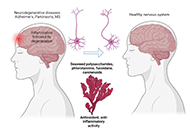 From the ocean to the brain: harnessing the power of marine algae for neuroprotection and therapeutic advancesOpen AccessReviewRecent investigations have shed light on the potential of seaweed, an abundant source of bioactive compounds, to mitigate and combat neurodegenerative diseases. In this comprehensive review, the acc [...] Read more.Leonel Pereira, Ana ValadoPublished: November 17, 2023 Explor Neuroprot Ther. 2023;3:409–428
From the ocean to the brain: harnessing the power of marine algae for neuroprotection and therapeutic advancesOpen AccessReviewRecent investigations have shed light on the potential of seaweed, an abundant source of bioactive compounds, to mitigate and combat neurodegenerative diseases. In this comprehensive review, the acc [...] Read more.Leonel Pereira, Ana ValadoPublished: November 17, 2023 Explor Neuroprot Ther. 2023;3:409–428
DOI: https://doi.org/10.37349/ent.2023.00058
This article belongs to the special issue Natural Products in Neurotherapeutic Applications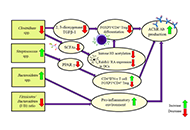 Overview of biomarkers in myasthenia gravisOpen AccessReviewMyasthenia gravis (MG) is a rare auto-immune neuromuscular junction (NMJ) disorder which is caused by formation of autoantibodies and destruction of NMJ components. The MG diagnosis is based on the [...] Read more.Fatemeh Afrashteh, Rayan RajabiPublished: October 31, 2022 Explor Neuroprot Ther. 2022;2:210–225
Overview of biomarkers in myasthenia gravisOpen AccessReviewMyasthenia gravis (MG) is a rare auto-immune neuromuscular junction (NMJ) disorder which is caused by formation of autoantibodies and destruction of NMJ components. The MG diagnosis is based on the [...] Read more.Fatemeh Afrashteh, Rayan RajabiPublished: October 31, 2022 Explor Neuroprot Ther. 2022;2:210–225
DOI: https://doi.org/10.37349/ent.2022.00029
This article belongs to the special issue The Future of Biomarkers in CNS Diseases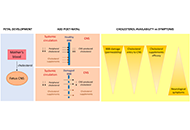 Cholesterol in autism spectrum disordersOpen AccessReviewThe autism spectrum disorder (ASD) comprises a series of neurological diseases that share serious alterations of the development of the central nervous system. The degree of disability may vary so t [...] Read more.Rafael Franco ... Irene Reyes-ResinaPublished: August 05, 2021 Explor Neuroprot Ther. 2021;1:10–18
Cholesterol in autism spectrum disordersOpen AccessReviewThe autism spectrum disorder (ASD) comprises a series of neurological diseases that share serious alterations of the development of the central nervous system. The degree of disability may vary so t [...] Read more.Rafael Franco ... Irene Reyes-ResinaPublished: August 05, 2021 Explor Neuroprot Ther. 2021;1:10–18
DOI: https://doi.org/10.37349/ent.2021.00003
This article belongs to the special issue Cholesterol Dyshomeostasis in Neurological Diseases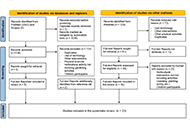 Effect of gardening physical activity on neuroplasticity and cognitive functionOpen AccessSystematic ReviewBackground: The beneficial effects of gardening as a form of physical activity have garnered growing interest in recent years. This research aimed to evaluate the effect of gardening as a physica [...] Read more.Antonio G. LentoorPublished: June 05, 2024 Explor Neuroprot Ther. 2024;4:251–272
Effect of gardening physical activity on neuroplasticity and cognitive functionOpen AccessSystematic ReviewBackground: The beneficial effects of gardening as a form of physical activity have garnered growing interest in recent years. This research aimed to evaluate the effect of gardening as a physica [...] Read more.Antonio G. LentoorPublished: June 05, 2024 Explor Neuroprot Ther. 2024;4:251–272
DOI: https://doi.org/10.37349/ent.2024.00081
This article belongs to the special issue Empower Yourself - Physical Activity as Prevention and Rehabilitation of Neurological and Psychiatric Diseases -
